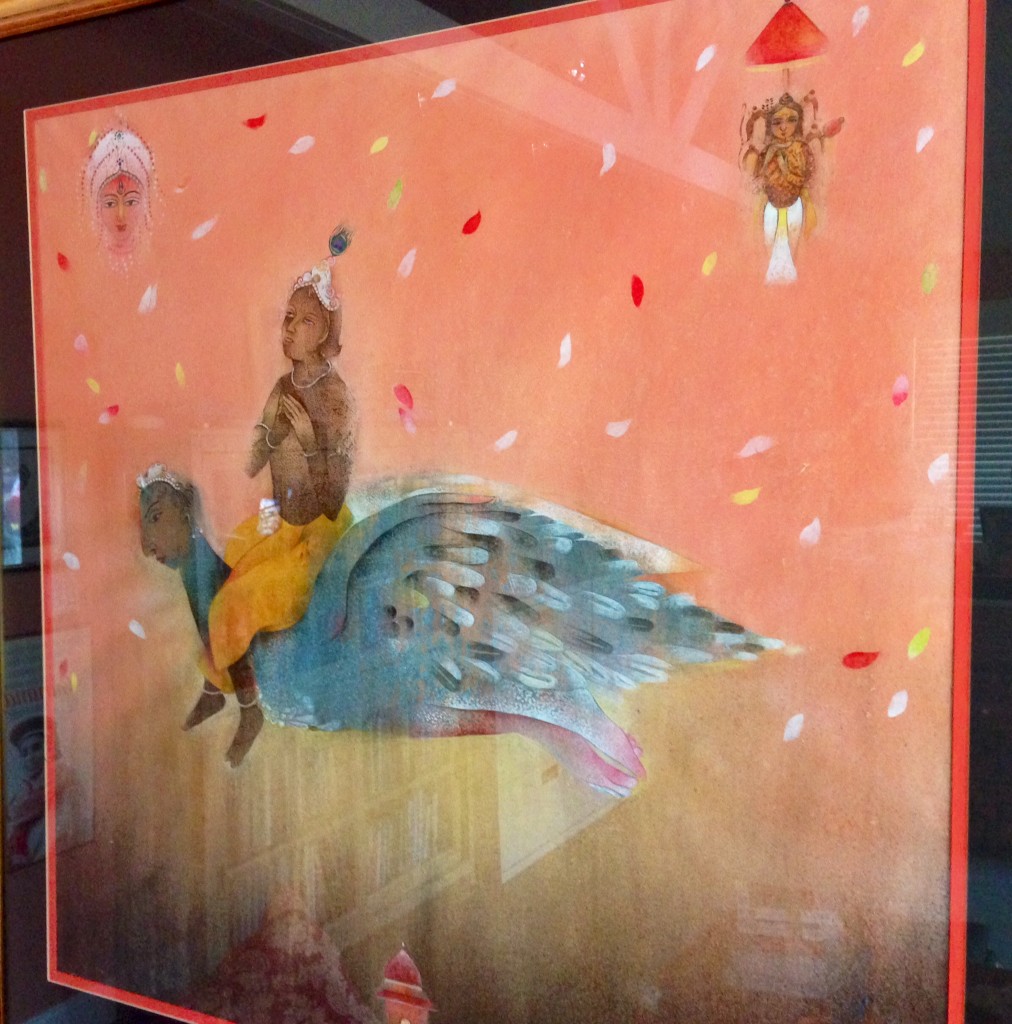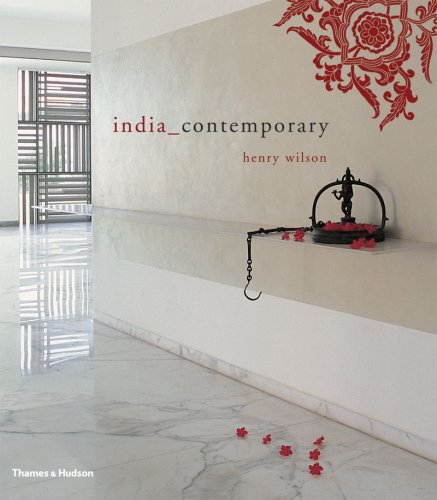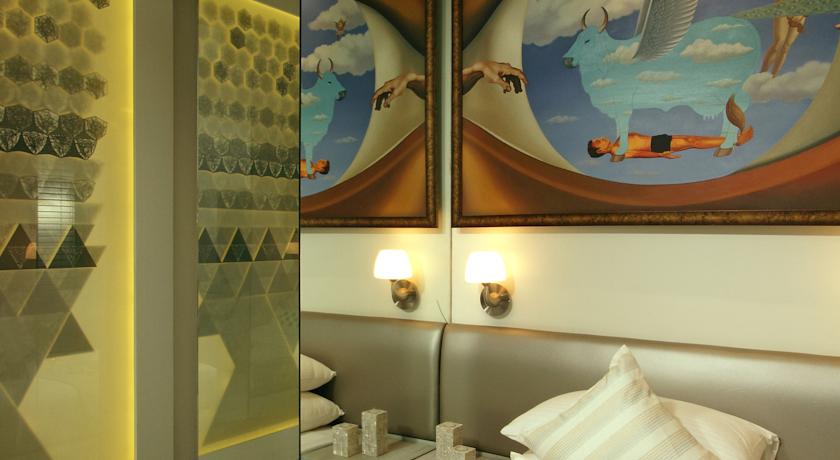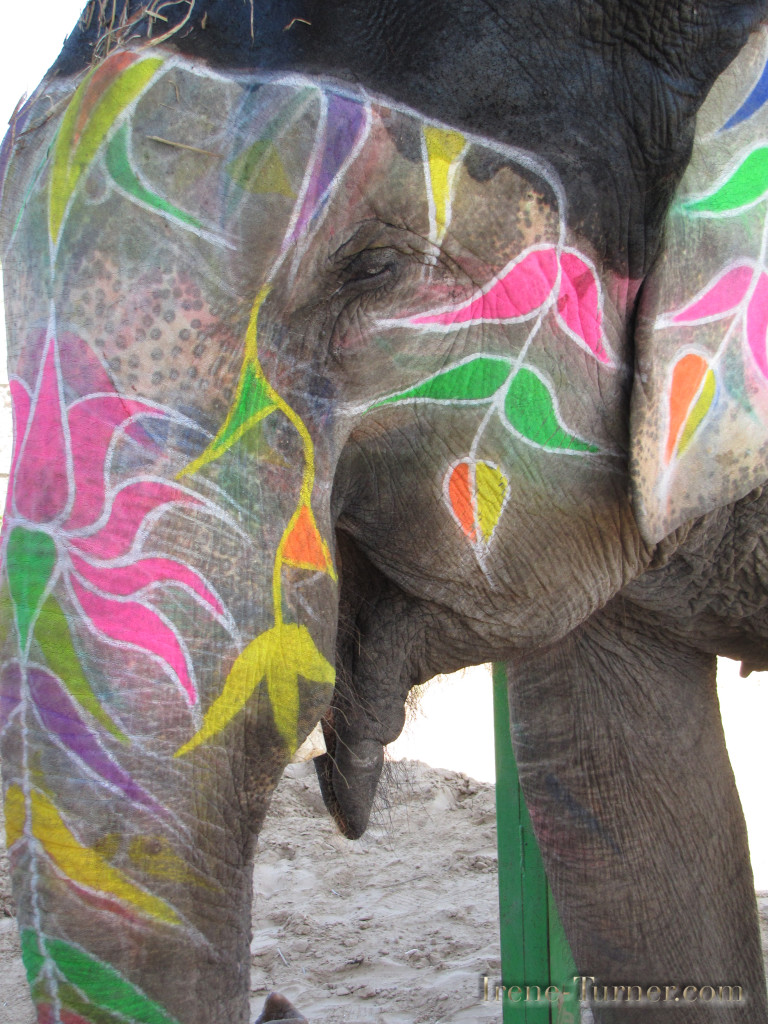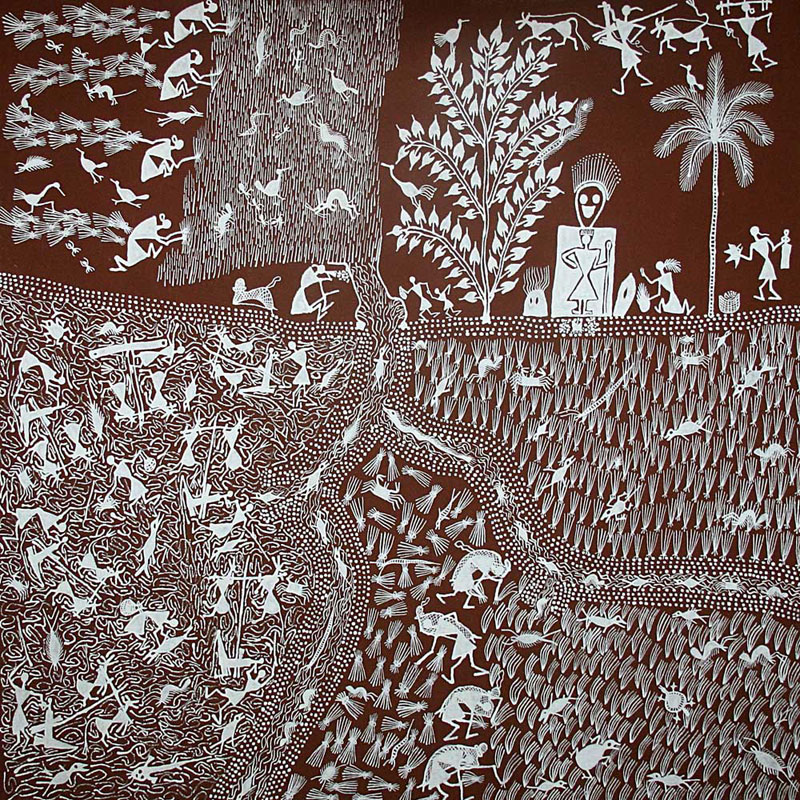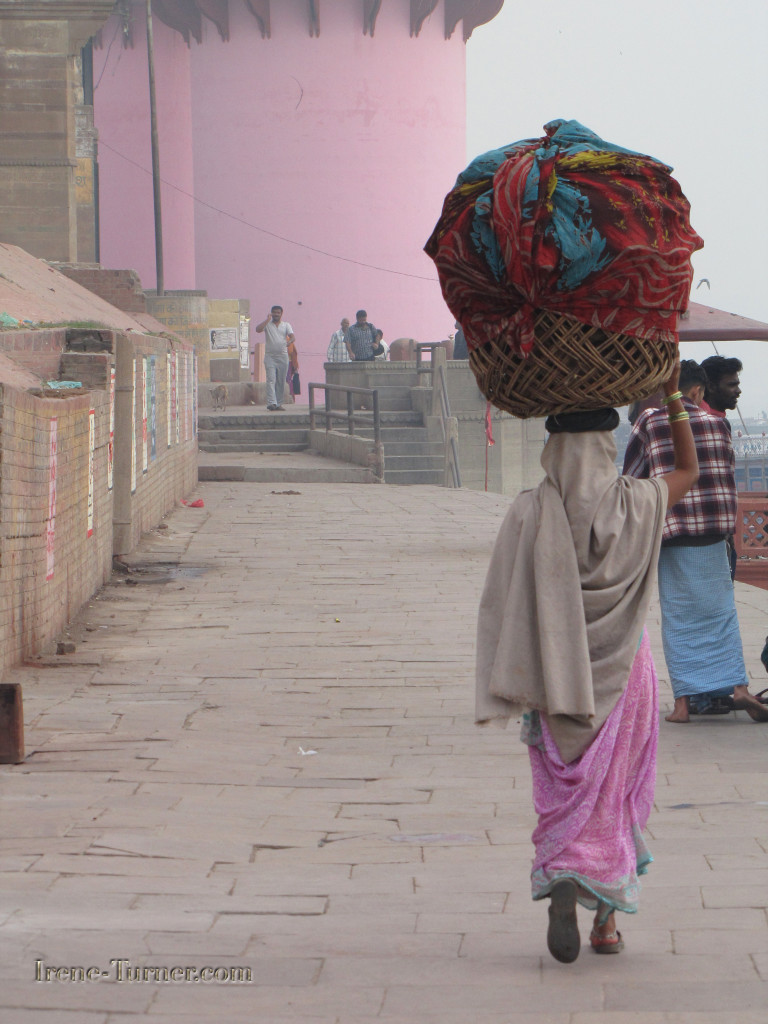After all the reminiscing about my travels around India, I want to touch on Contemporary India Art and Spirit found in their design work internationally.
Like I said in my post on Varanasi, “it’s the aspect of complete integration of the spiritual into every aspect of life that I found beautiful, moving and simply fascinating”. And yes, even in their design work they incorporate their love of God! The painting below by Indian artist Siddhartha Sengupta that I am fortunate to have in my home is the perfect example.
A work on paper, this 36″ square, tiny dot painting is a modern day representation of Lord Vishnu riding Garuda, a mythical bird. Sengupta’s work portrays a deep sense of spirituality which pervades his entire gamut of art. His paintings chronicle the journey of the soul from the ephemeral to the eternal, from the mundane to the divine always in contemporary form. I love his paintings, I love the color, the style and the sensitivity of the subject.
Recently on Facebook I’ve been getting to know Kaveri Singh, artist and muralist, originally from India and working internationally from paint finishes to heading a team of artists who recently painted the sacred murals of Sarnath. She collaborated with Interior Designer Joanne Poitier on her private home in the Santa Ynez wine country, incorporating ancient tile forms both Muslim and Hindi inspired in a beautiful and contemporary way.
One of my favorite design books, and one I use for inspiration all the time is India_Contemporary by Henry Wilson. Wilson, a photographer, traveled around and compiled some beautiful interiors with the flavor of Modern India and reflective of their history and their spirit. The rooms could be found anywhere in the world.

more from India_Contemporary, I love the use of contemporary color in a country that is color crazy!
And…as Ancient India emerges into the 21st century it suffers world scrutiny of it’s many traditions which are steeped in violence against their caste system and towards women in general. Today many of their most well known citizens, Bollywood stars and other media moguls, are working tiredlessly to help their country come to grips with their dark side in a new world.
There is Aamir Khan, one of Bollywood’s finest. He premiered in Satyamev Jayate (Truth Alone Prevails), a daytime Indian television talk show. The show highlights sensitive social issues prevalent in India such as female foeticides, child sexual abuse, dowry, medical malpractice, honor killings, insensitivity towards the physically disabled, domestic violence, overuse of pesticides leading to pesticide poisoning, alcoholism, untouchability, plight of senior citizens and water crisis. It is raising awareness of these issues world wide.
There is also one of my favorite female directors, Deepa Mehta and her famous trilogy Earth, Fire and Water. I found her through her stunning and disturbing portrayal of the plight of young Indian widows in her movie Water. She is known as the voice of New India in the film industry. If you haven’t seen them, I highly recommend! Check out the trailer for water below.
And Indian advertising is also jumping on the bandwagon, especially in an ad campaign to raise awareness of the abuse of women in their country. The Taproot ad campaign simply and effectively captures India’s most dangerous contradiction: that of revering women in religion and mythology, while the nation remains incredibly unsafe for its women citizens. While it outraged several women’s groups who do not want people to set women up as Goddesses, in my opinion it was effective in hitting home, no pun intended.
As with any country, both good and bad exist simultaneously. But it is a good day when influential people can make a statement to help change the wrong. My only hope is that as they emerge that they keep their sweetness and their faith. It is beautiful to behold. In the meantime…
The two places that hit home for me and that reflected Contemporary India in a way that imbibed their spirit in a very modern and pleasing way was the Le Sutra Art Hotel where I stayed at in Mumbai. Whoever curated the art for the entire hotel, and used it to create a different ambience and story for each and every room was brilliant!
The use of different artists by room and the connection to Hindu mythology is fascinating. I would have liked to know more about the curator and the artists in booklet form or otherwise. But my room was fantastic, albeit in need of a bit of repair. I never the less luxuriated in the Indian vibe with all of the first world luxuries.
And, just 10 days before leaving India the new international terminal at Chhatrapati Shivaji Mumbai airport opened and I got the privilege of leaving India through this portal between east and west. Designed by American Architect firm Skidmore, Owings & Merrill, it celebrates a new global, high-tech identity for Mumbai and is imbued with motifs and sculptural forms that clearly reflect the local history and culture.

The departure entry to Chhatrapati Shivaji International Airport in Mumbai, India-image irene-turner.com
To me, it felt a bit like swimming underwater looking up at large lotus pods. I loved it and was so glad to have the opportunity to check it out before leaving. I hope that it is maintained well and appreciated by everyone who walks through. It feels a bit like the new Gateway to Modern India.
Along with the old I appreciated the new and contemporary India that I saw, and wish them well in their adaptation of the modern world mixed with their ancient traditions.
To see more of the hotel I stayed in, check out the video below. A very interesting and humorous rendition of an old and respected history, wouldn’t you say?



